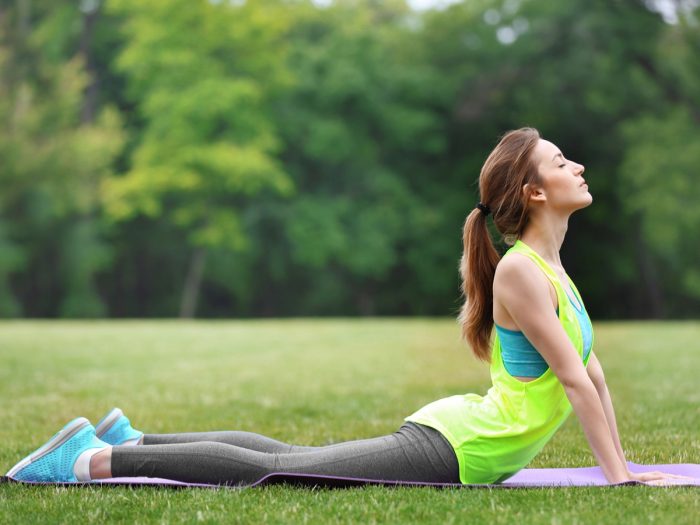McKenzie exercises follow controlled movements, intended to alleviate chronic and acute back pain. These exercises work by strengthening back muscles and realigning discs that require attention.
What Are McKenzie Exercises?
The McKenzie method is a series of stretches and exercises for lower back pain relief. This method was developed in the 1960s when physical therapist Rob McKenzie observed that elongating the spine can have a significant effect on pain management. The McKenzie exercises are designed to realign displaced intervertebral discs. The gentle exercises that follow are a part of a series. It should be noted that people with acute lower back pain may not be able to complete each of these right away. Progress through them at your own pace, being mindful of your body’s limits. Move slowly and breathe steadily. [1] [2]
If you have recently undergone back surgery, or have a serious spinal issue, such as a fracture, these exercises may not be appropriate. Consult your spinal specialist before beginning these exercises. [3]

McKenzie exercises can help relieve back pain. Photo Credit: Shutterstock
Lying on Stomach
Lying flat on your stomach is the first and gentlest exercise in this series. Lie down on a flat surface, with your arms by your side. You can turn your head to either side or keep your face down. Try switching whichever side you face each day. Breathe slowly and focus on your muscles relaxing all along your spine. Stay in the position for 2-3 minutes. Repeat up to eight times a day.
Lying on Pillow
The next exercise will create a bit more elongation in the spine, while still focusing on gentle stretching. Place a pillow on the floor, and resume the same position as in the previous exercise. Keep the pillow under your chest. Once again, rest for 2-3 minutes, breathing steadily and relaxing into the posture. Repeat this pose up to eight times a day.
Prone on Elbow
Remove the pillow from under your chest and place your forearms on the floor. Slowly press up until you are propped up on your forearms, with your shoulders in line with your elbows. Hold this position for 2-3 minutes. Monitor your pain. Stop if this is significantly more painful than the previous exercise. You can gradually work up to this posture as the first two become more comfortable. Repeat this up to eight times throughout the day.
Prone Press-ups
This posture will help restore the natural curve of your back. Instead of resting on your forearms, you will press upon your palms. Place your palms flat on the floor, directly under your shoulders. Slowly and steadily press yourself up until your arms are fully extended. Be mindful of your breath. If you are holding it in, this exercise might be too painful for you to continue.
Hold the position for 2-3 minutes, repeated up to eight times.
Standing Extension
Get up from the floor and stand straight, with your feet hip-width apart. Place your hands on the small of your back, with your fingers pointing down to the ground. Your hands will offer support as you gradually begin to bend backward. Bend as far as it is comfortable with your knees straight. Hold this pose for only a few seconds and then return to standing upright. Do ten repetitions of this motion and repeat as many times as it is comfortable throughout the day.
Lying Flexion
Lie on your back. If this is painful, you can place a pillow under your head. Place your feet flat on the floor, hip-width apart. Bring both knees up to your chest, holding them there with your hands. Maintain the posture for a few seconds, then return to the starting position. Do six repetitions. These exercises are a progression. If this step is too painful for you, work through the first few exercises day by day. Eventually, these more advanced flexions will become possible. [4]
Sitting Flexion
This posture is a version of the Lying Flexion, with a bit more mobility. Begin by sitting on the edge of a hard chair, with your feet flat on the floor. Bend forward, letting your hands drop down between your legs. Hold here for a few seconds, then return to an upright position. Repeat six times, up to four times a day.
Standing Flexion
Stand with your feet hip-width. Bend forward, with your knees straight. Only go as far as you can without straining. Pause here for a few seconds, then return to standing. Do six repetitions, twice a day.
As you work through these exercises, always move slowly and monitor your pain. These are gentle exercises and should not exacerbate pain. Patience is important in the recovery process.
